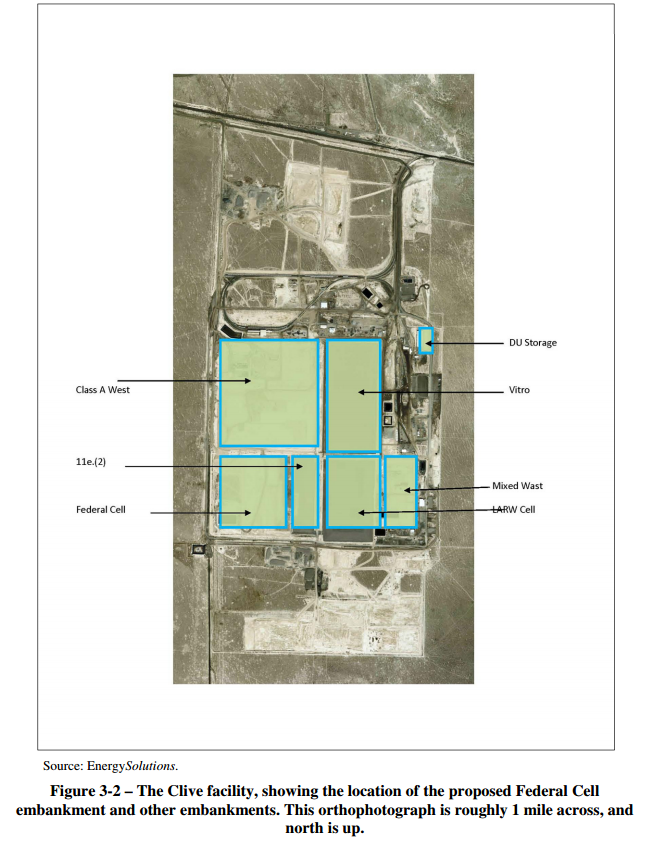(This is Part 1 of a two part article)
EnergySolutions (ES) is a company that focuses on nuclear waste recycling, nuclear waste disposal, and environmental remediation. ES operates the Clive landfill 80 miles west of Salt Lake City in Utah. The Clive landfill already had already taken in a small amount of radioactive material before the state of Utah recently banned radioactive waste.
ES has been asking the state of Utah for permission to bury three hundred and seventy five thousand tons (or about one half) of the U.S. stockpile of depleted uranium in the Clive landfill. This is the uranium left over after uranium ore has been subjected to the the enrichment process that raises the ratio of U-235 to U-238 for use in fuel and weapons. Depleted uranium is low-level radioactive waste now but it will get more and more radioactive over the next million years. Currently there are seven hundred and fifty thousand tons of depleted uranium at three sites in the U.S. including Kentucky, Ohio and South Carolina. EnergySolutions is proposing to ship the one ton drums of waste to the Clive landfill over the next 30 years. Once the drums arrive, they are to be covered with concrete, clay and rocks in pits lined with clay.
This Monday, the Utah Department of Environmental Quality (DEQ) released a new evaluation of safety concerns about the project. The DEQ listed eight conditions that they say ES must satisfy before they are allowed to ship hundreds of thousands of drums of nuclear waste to Utah for burial. These issues are listed as unresolved but none of them are considered to be unresolvable. They also listed seven questions that ES must answer before its proposal will be accepted.
ES asked the state of Utah to suspend the application process temporarily. While ES is sure that they can meet the eight state requirements and answer the seven questions, the company said that they wanted to have time to work on compliance before a mandated public hearing on the project. Once all the issues have been resolved and the questions answered to the satisfaction of the DEQ, then ES will request that the normal proposal acceptance process resume, including meetings to solicit public input.
The DEQ evaluation found that ES had not resolved the following issues:
· Evapotranspiration cover - Evapotranspiration is a combination of evaporation and plant transpiration. ES must satisfy DEQ that the cover over the drums of waste they are proposing would prevent evapotranspiration of radioactive materials.
· Infiltration - Infiltration is a measure of how quickly surface water soaks into the ground. ES must have a satisfactory way to prevent such infiltration into the waste dump area.
· Erosion of cover - ES must show DEQ that the combination of materials which will be used to cover the waste drums are secure against erosion.
· Frost damage - ES must take measures to prevent frost damage to the integrity of the cover materials over the disposal area.
· Effects of biological processes on radionuclide transport - ES must insure that biological processes including bacteria, fungus and plant roots do not invade the waste disposal area and move radioactive particles out of the landfill.
· Clay liner - ES must show DEQ that the clay liner proposed for the nuclear waste dump area is adequate to prevent ground water from leaching radioactive materials from the dump and moving them through the water table into surface water and aquifers that supply wells.
· GoldSim quality assurance - ES must apply the widely-used GoldSim modeling process to risks associated with the behavior of radioactive materials underground. Possible escape of radon gas is of special interest in this analysis.
· Deep time analysis - ES must submit an projection of geological processes and radioactive activity in the dump into the far future.
(See Part 2 for the list of questions.)
